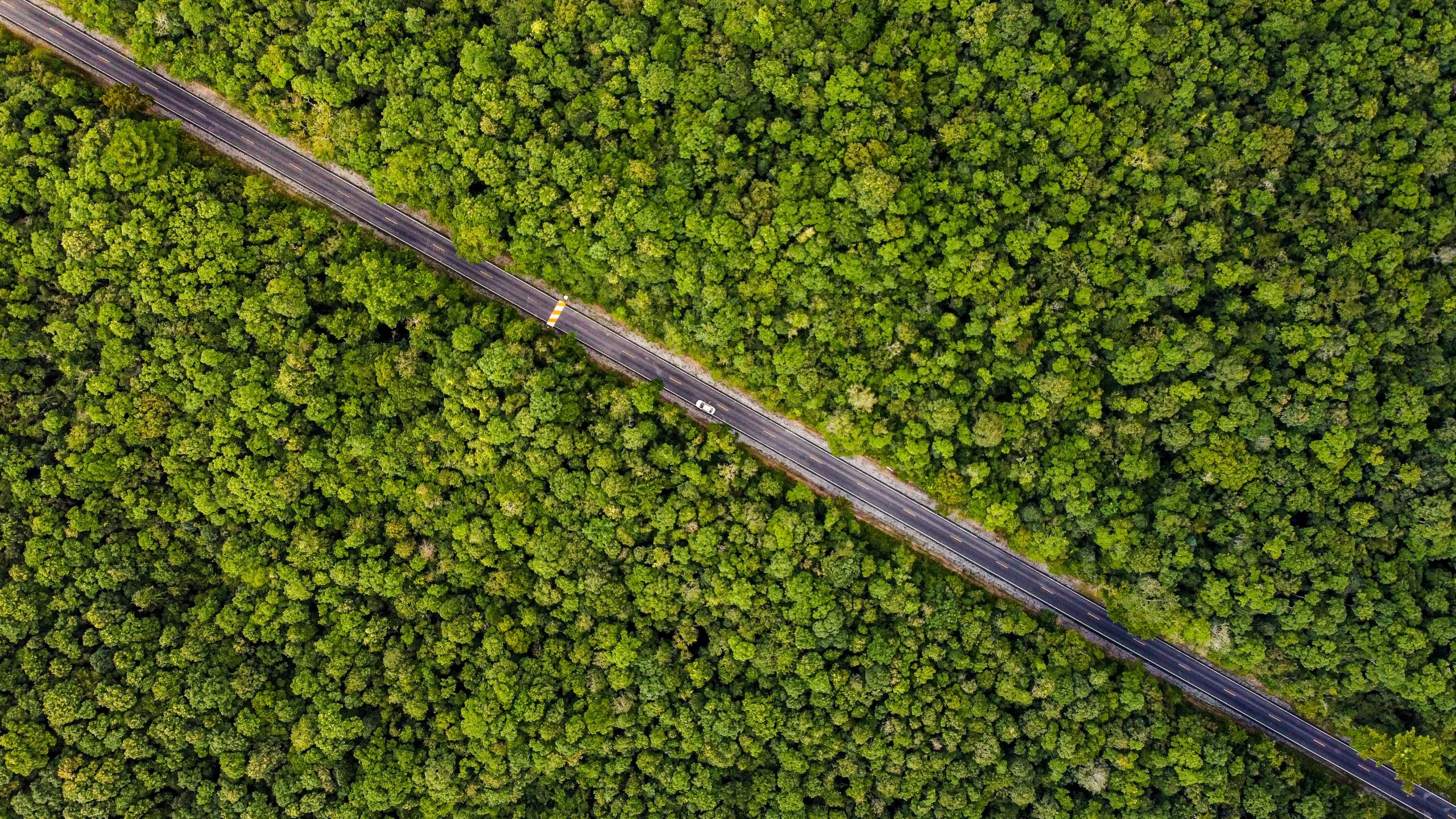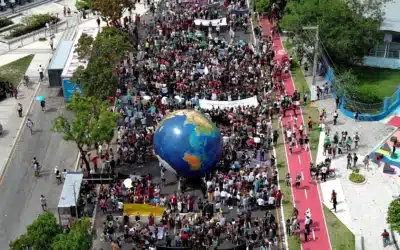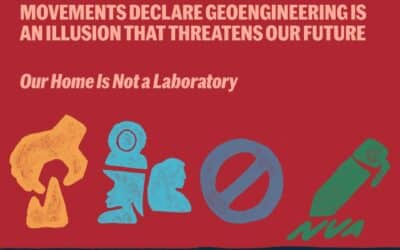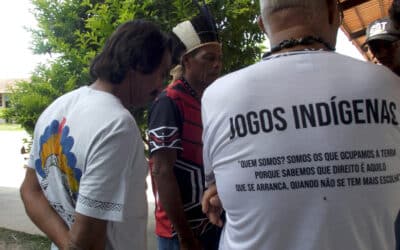por Simone Lovera
Hace mucho tiempo, unos 30 años atrás, la vida era muy fácil para los conservacionistas. En vez de tener que lidiar con conceptos complicados como la biodiversidad, que están definidos y cuantificables con indicadores acordados científicamente, simplemente les tocaban conservar la “naturaleza”. Casi todo lo que parecía más o menos verde calificaba como “naturaleza”: plantaciones de pinos, humedales destruidos (llamados “polders” en países como Holanda), campos de papa con algunas flores, estanques de camarones o parques urbanos. Además, toda esta naturaleza podría protegerse fácilmente simplemente colocando una cerca alrededor. Las áreas protegidas resultantes, las únicas áreas que podrían ser controladas por agencias y organizaciones de conservación de la naturaleza (a menudo políticamente insignificantes), formaban la piedra angular de las políticas de conservación de la naturaleza.
Continuar leyendo en ingles…
Then, in 1992, the Convention on Biodiversity came along, and everything became more complicated. Suddenly it mattered whether “nature” was biodiverse or not, and whether it was actually an ecosystem that met certain scientifically agreed criteria. Suddenly a bunch of exotic trees was not a forest ecosystem anymore, and a pond full of shrimp was not necessarily a marine ecosystem.
To make things even more complicated, the CBD was not about setting up protected areas, which were deliberately mentioned in one sub-article of the Convention only. In fact, those who are old enough to have been there during the negotiations of the Convention might remember Ulf Svensson, the outspoken Swedish negotiator, who openly declared that if the Convention was about protected areas, he would declare the whole of Sweden a protected area. The CBD was supposed to be about more, not just conservation, but also about sustainable use of forest, agricultural and marine biodiversity and about access to and sharing of the benefits of the genetic resources that sustain biodiversity.
Moreover, in the course of the past 29 years, the CBD has become more and more about people, and their relationship with biodiversity. It agreed upon an ecosystem approach, which explicitly recognized the need for participatory approaches to ecosystem conservation and use, as the communities that live with biodiversity on a daily basis are key to conserving that biodiversity. An impressive amount of guidance was developed by CBD Parties on how women and men could and should live in harmony with biodiversity: covering customary sustainable use, ecosystem restoration, the collective approaches by local communities to biodiversity conservation, the biodiversity governance rights of Indigenous peoples, women’s rights and gender justice, and the rights and role of youth in biodiversity conservation.
Yet, anno 2021, this impressive package of CBD guidance is about to be thrown out of the window. Thanks to a vocal social media campaign that was openly financed by some of the most wealthy corporations and CEOs on the planet, biodiversity conservation has been simplified to nature conservation again, or even more simplistic, “nature-based solutions”. That those solutions are solutions for business, and not for biodiversity, is too often overlooked.
Instead of the holistic, scientifically and socio-economically grounded policies the CBD has developed over the past decades, conservation in the proposed draft Global Biodiversity Framework (GBF) boils down to a simple target of covering 30% of the planet with, not even equitably governed, protected areas. That those areas cannot be protected against climate change, one of the main drivers of biodiversity loss, is conveniently forgotten. Also forgotten is the commitment by Heads of State in 2015, when they adopted the Sustainable Development Goals (SDGs) including SDG 15.2, in which they committed to halt deforestation and forest degradation in 100% of all forests, instead of just 30%. Forgotten is the increasing body of evidence that areas governed by Indigenous peoples and local communities (ICCAs) are actually more effectively conserved than conventional protected areas.
After all, if one can simply pretend to provide a nature-based solution in the form of a carbon offset by declaring an area as protected and subsequently claim a payment for the “environmental service” of protecting that area, why bother whether the biodiversity in that area will actually survive devastating climate change in the long run? Or whether the women, Indigenous Peoples and local communities that depended on that area for their livelihoods will find an alternative source of livelihood now that the area is no longer ‘equitably governed’?
Almost 30 years of biodiversity policy making will be lost if the latest draft of the post-2020 Global Biodiversity Framework is adopted through the non-transparent, non-participatory virtual process the Bureau has proposed to squeeze this draft framework through the throats of CBD Parties before the end of 2021. Let’s hope Parties will protest against this loss of wisdom and CBD policy guidance and insist on serious, face-to-face negotiations about a completely different GBF that does justice to the policy guidance that has been developed until now. And if it takes one or two years more to develop such a GBF, no problem. Countries can always use the extra time to comply with the first Strategic Plan of the CBD…
Originally published in ECO on 29 April 2021.




